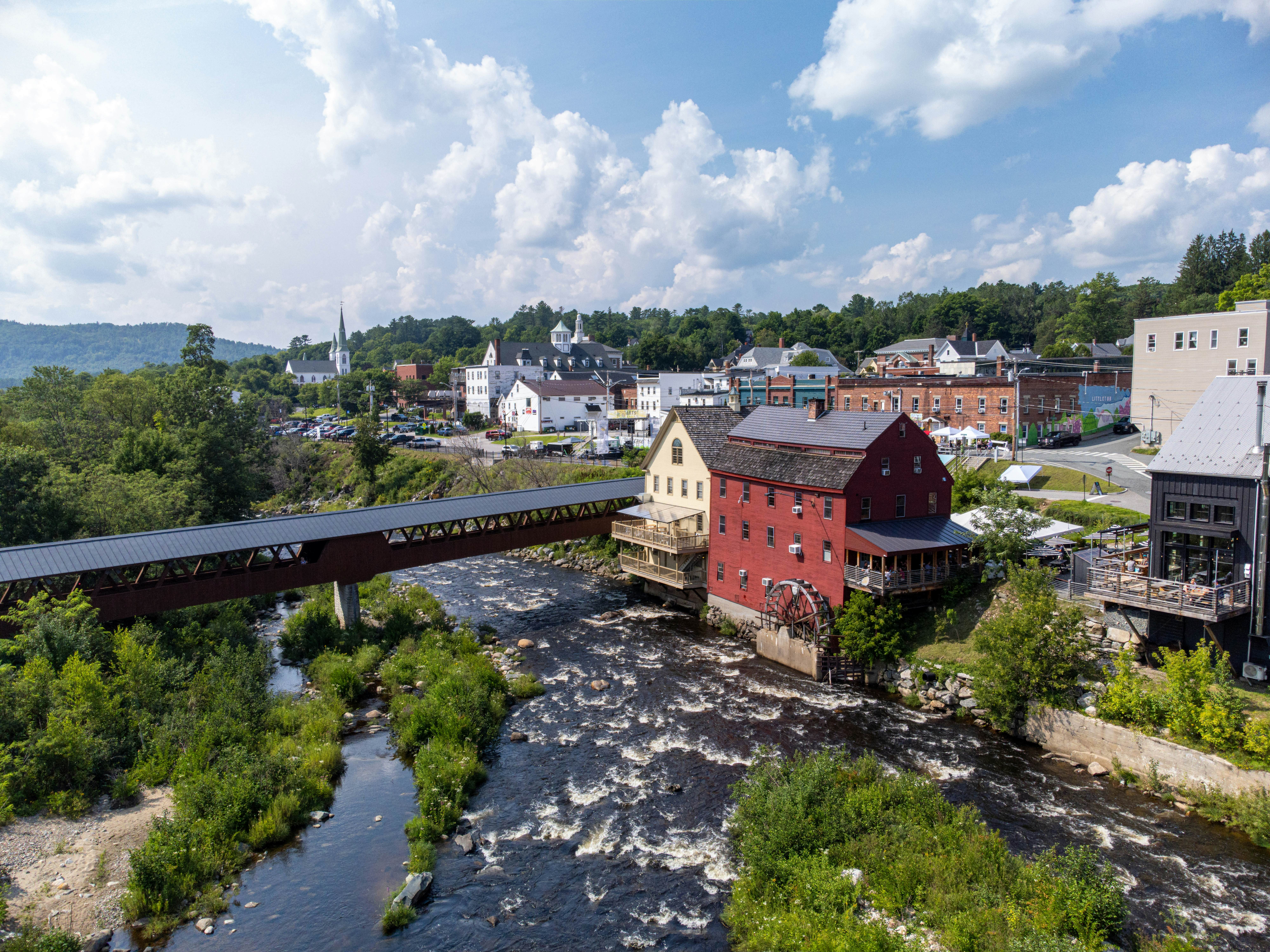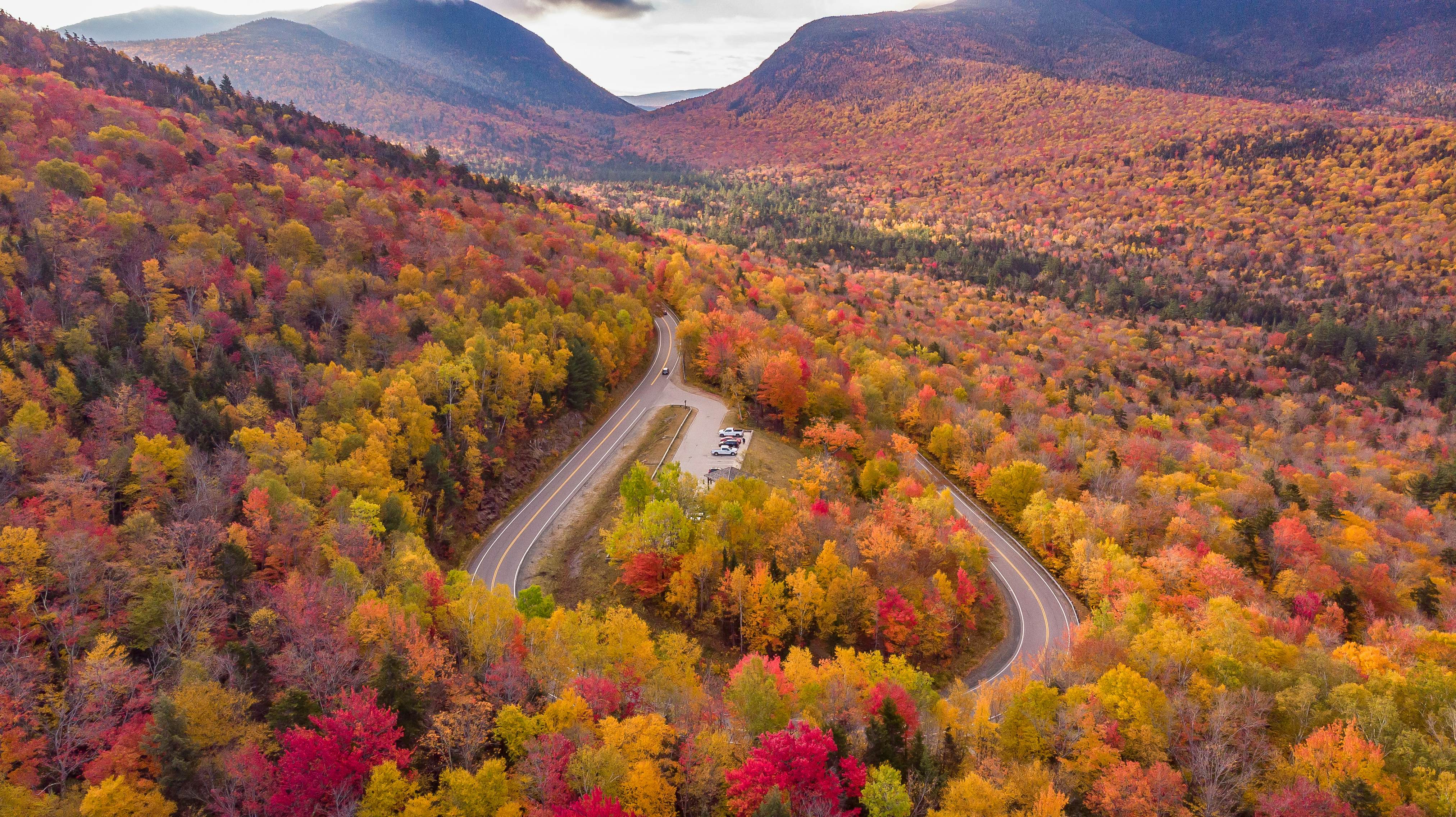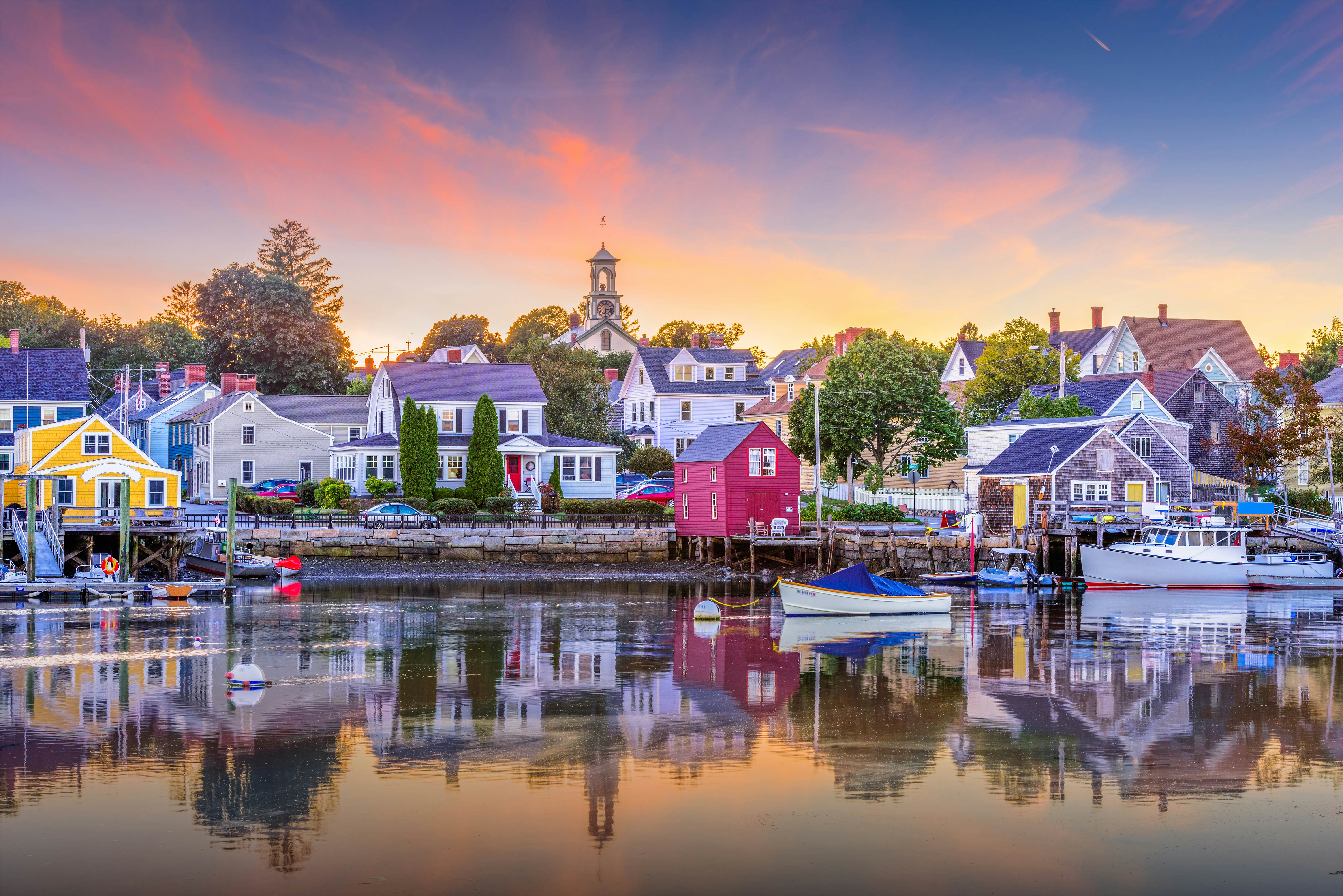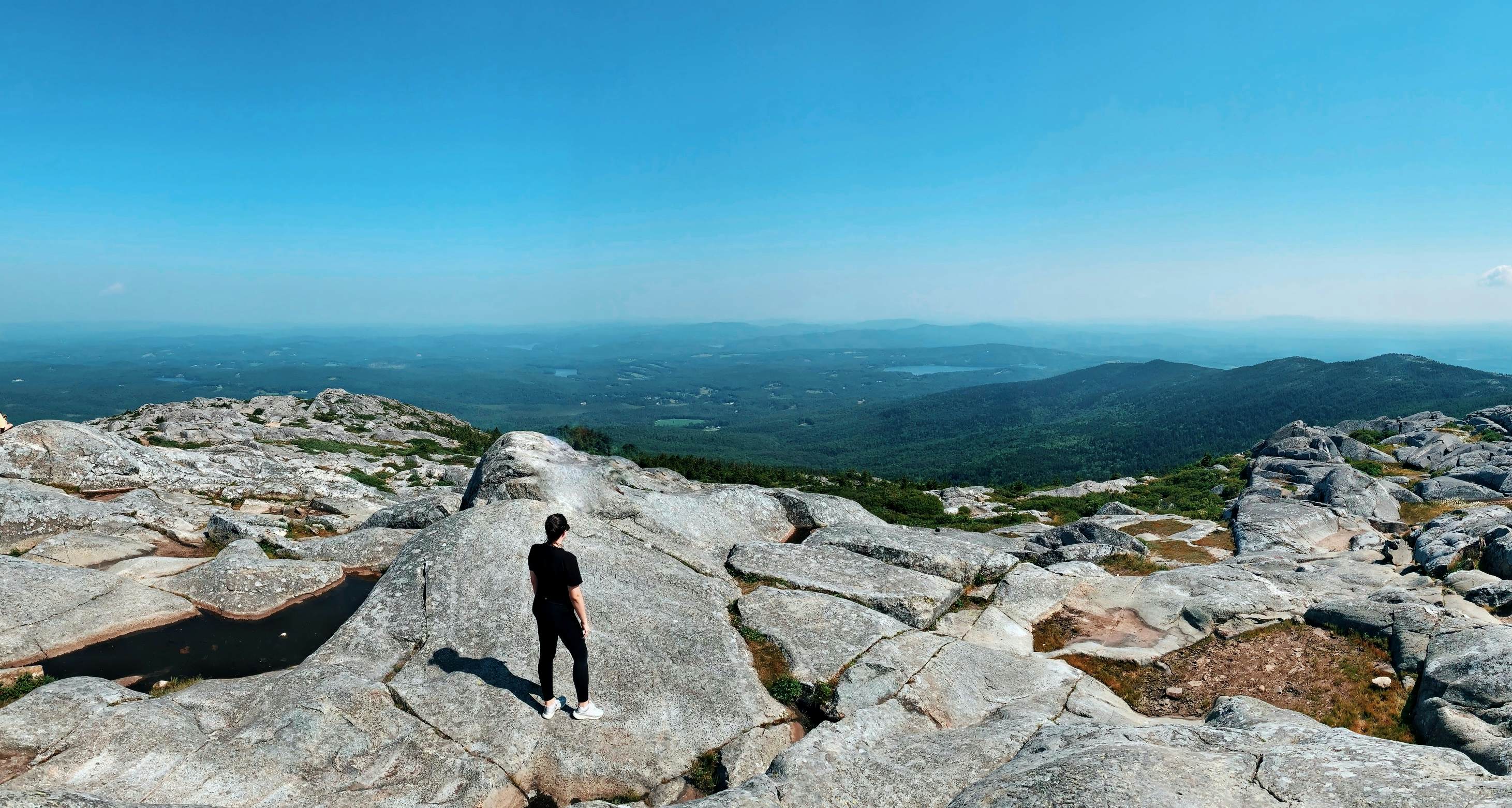A First-time Guide To New Hampshire

I’m here to sing the praises of New Hampshire – New England’s best-kept secret – which combines the countless small towns you’ll find in Vermont, outdoor adventures and rugged wilderness to rival Maine, and even a small coastline that extends the pleasures of Massachusetts’ beaches.
This famously flinty, down-to-earth state has tended to have a bigger reputation with political junkies than vacationers. Yet with a picture-perfect lake around seemingly every bend of the road; some of the tallest mountains on the East Coast, filled with hiking and skiing trails; a rich repertoire of culture and history; and that wonderful (if admittedly short) coastline, anyone who makes the trip here will find ample rewards, whatever leisurely pursuits they prefer.
If you like the sound of the Granite State so far, read on for an introductory guide for first-time New Hampshire visitors.
New Hampshire's hiking possibilities are endless. KMarsh/Shutterstock KMarsh / Shutterstock When should I go to New Hampshire?The Granite State is delightful in all seasons – with one glaring exception.
In the summer high season, the state bursts with outdoor possibilities. Maybe you'll go waterskiing on Lake Winnipesaukee, surfing or lying out on the sand at Jenness Point Beach, or eating lobster rolls alfresco in Portsmouth. And there are hiking trails galore, whether in the high elevations of the White Mountains or in one of the countless nature reserves that dot this small, pine-covered state. Note that in summer, prices jump to match demand.
New Hampshire has some of the most glorious fall foliage anywhere, which understandably draws leaf peepers from Boston and beyond for weekend forays in late September and early October. While the display put on by scarlet maples, golden birches and yellow-orange oaks never fails to dazzle, the short peak-foliage period is by far the most expensive time to visit New Hampshire.
Winter sports are a major thing in the state, which sees an average of over 100in of snowfall per year. Such major resorts as Bretton Woods, Cannon Mountain and Loon Mountain draw serious skiers and snowboarders to their miles and miles of world-class pistes, while cross-country skiers and snowshoers can delight in exploring fairy-tale-like paths through the woods and across frozen lakes. Anyone considering a winter trip should pack more layers than they think they’ll need, as the average high temperatures in January and February hover around 30°F (0°C).
The spring is New Hampshire’s low season, when cold temperatures linger and the thaw begins, leading to muddy conditions on country trails and unpaved roads. Still, the woods remain beautiful as the melting snow reveals moss-covered rocks – before the trees all burst, seemingly all at once, with green buds.
The one time of year to avoid at all costs in New Hampshire is mid-May to early June, when the black flies hatch. The bites of these tiny pests turn into itchy welts – which is why you’ll see Granite Staters from the North Country to the Seacoast sticking to their screened-in porches during this short period.
How much time should I spend in New Hampshire?
A weekend getaway provides a nice introduction to the state, whether you’re coming for skiing, foliage, a little bit of beach time or a road trip through windy roads and small towns.
Yet settling into a country cabin or lake house for two (or more) weeks lets you reset your clock to a delightful country pace – think rising just after dawn to take coffee on the porch, then retiring early after a busy day of hiking, swimming…or just devouring a novel on said porch. Such extended stays are wonderful options for families, with frog chasing, rock collecting and other general woods-frolicking wonderful experiences for city kids in particular.
 As long as you have a car, getting between New Hampshire's tiny towns and villages is easy. Eli Wilson/Shutterstock Eli Wilson / Shutterstock
Is it easy to get to and around New Hampshire?
As long as you have a car, getting between New Hampshire's tiny towns and villages is easy. Eli Wilson/Shutterstock Eli Wilson / Shutterstock
Is it easy to get to and around New Hampshire?Manchester–Boston Regional Airport has a number of flights to major hubs, as well as Florida cities, while Amtrak serves the southeast corner of the state on its Downeaster service from Portland to Boston, and the Connecticut River Valley on the Vermonter. Concord Coach Lines’ comfortable buses whisk passengers from Boston to the state capital, as well as points north.
Yet outside of those public transport options, you should expect to get around New Hampshire by car. While several interstate highways make crossing the state efficient, it’s on the winding state and county roads that the state’s character reveals itself. Ponds glitter through leaves just beyond the bend. A white-steepled church and tidy town green greet you in just about every small village. “Connected farm” structures – with houses linked with barns via covered passageways known as “ells” – zoom by by the dozen. A road trip through New Hampshire’s back roads is a true delight.
While the state is compact, driving distances can be surprisingly long, given the windy roads and hilly terrain. So take your time to (carefully!) admire the landscapes as you go, and by all means pull over at as many roadside farm stands, ice cream shops and scenic viewpoints as you can manage.
 Kancamagus Hwy is one of the world's best drives to see stunning fall foliage. YuziS/Shutterstock YuziS / Shutterstock
The top things to do in New Hampshire
Kancamagus Hwy is one of the world's best drives to see stunning fall foliage. YuziS/Shutterstock YuziS / Shutterstock
The top things to do in New HampshireLeaf-peep along the Kancamagus Hwy
This is not exactly an under-the-radar recommendation, it’s true – and thanks to the hundreds of cars that ply Rte 112 on peak-foliage weekends, it may take you a while. Yet along its 34-mile (55km) length through a pass in the White Mountains, the Kancamagus Hwy may be the most dazzling drive for autumn foliage in the world. Connecting the town of Lincoln with the tourism center of Conway, the “Kanc” traverses a gorgeous patch of the White Mountain National Forest, through old-growth trees and along the curves of the Pemigewasset and Swift Rivers. At its center, hairpin curves lead to the 2855ft-high (870m-high) Kancamagus Pass with views stretching for miles of slopes painted in almost neon shades of yellow, red and orange. Keep in mind that overlooks, trailheads, pretty ponds and other stop-worthy detours can turn the drive into a full-day affair – and you shouldn’t expect to drive fast along the route. Then again, you won’t want to.
Embrace summer lake life
Come summer, most Granite Staters decamp for their lake cabin, kayak strapped to the Subaru roof. (Since some 1300 lakes dot the small state’s glacier-sculpted terrain, such getaways might be only a few miles from the year-round home.)
You can’t go wrong by following the locals’ lead and renting your own idyllic waterfront spot – whether an off-the-grid shack deep in the woods of the North Country or Cheshire County, or a deluxe spread on the shores of enormous, dreamy Lake Winnipesaukee. While they vary widely in size, depth and accessibility, just about every lake in the state is made for afternoon dips, relaxing canoe rides, and sightings of beavers, blue herons and other creatures who love the water as much as you will. Peruse the listings on Airbnb and Vrbo to find your dream option.
 Take some time to explore historic Portsmouth's cobblestone streets. Sean Pavone/Shutterstock Sean Pavone / Shutterstock
Savor Portsmouth’s historic vibes
Take some time to explore historic Portsmouth's cobblestone streets. Sean Pavone/Shutterstock Sean Pavone / Shutterstock
Savor Portsmouth’s historic vibesOne of New Hampshire's oldest towns is also one of its most delightful. What’s more, in a state composed largely of far-flung towns, Portsmouth offers a dose of urban flair unusual for the state. In the cobblestone streets in and around central Market Sq, visitors leave their cars behind to wander between gastropubs, independent boutiques and a small harborfront walk. And at Strawbery Banke Museum in the city’s truly historic South End, reenactors enliven a collection of centuries-old homes, revealing daily life in the premodern and even pre-Revolutionary era.
Dive into politics in a civically obsessed state
New Hampshire’s citizens engage in civic life and politics with a passion. Town budgets are annually set at meetings to which all residents are invited to participate, and the New Hampshire state legislature, at 424 members, is the world’s fourth-largest English-speaking legislative body (behind the Parliaments of the UK and India, and the US Congress). Most notable nationally (and internationally) is its quadrennial presidential primary, which the state’s constitution stipulates must occur before any primary in any of the 49 other states – and which draws frontrunners, also-rans and sometimes just plain weirdos to the hustings in every corner of the state. Look out for local announcements wherever you find yourself, and feel free to drop in at a town hall, rally or annual meeting. You won’t have to look far to find one.
 Mt Monadnock is one of the most-climbed mountains in the world. Adubbz26/Shutterstock Adubbz26 / Shutterstock
My favorite thing to do in New Hampshire
Mt Monadnock is one of the most-climbed mountains in the world. Adubbz26/Shutterstock Adubbz26 / Shutterstock
My favorite thing to do in New HampshireNear the visitor center, the trail starts off mildly, more of a pleasant woods excursion than a thigh-burning slog. Then those rocky steps begin. Hundreds and hundreds of them. And the dozens of folks I see climbing onward above me inspire me to push on.
As an enthusiastic if not widely experienced hiker, the popularity of Mt Monadnock (3165ft/965m) always amazes me given how challenging portions of the three-to-four-hour round-trip trail can be. (Astonishingly, the massif in southwestern New Hampshire is the second-most-climbed mountain in the world, after Mt Fuji.) But then I reach the tree line, scrambling across boulders and scree toward the mysteriously bare and rocky summit, and all the sweat pays off.
From the top, I always linger to take in the near-endless 360-degree views, which on the clearest days can even reveal the skyline of Boston, 80 miles (129km) away. And even when I’ve climbed the mountain in overcast weather, literally tasting the clouds toward the top, the never-empty trail reveals the best of New Hampshire’s natural beauty (transcendentalist writers Henry David Thoreau and Ralph Waldo Emerson were fans), as well as New Hampshirites’ passion for the outdoors.
How much money do I need for New Hampshire?
New Hampshire has its share of upscale destinations; the palatial Omni Mount Washington at Bretton Woods and the Winnipesaukee-facing mansions of Moultonborough and Wolfeboro come to mind. Yet since the state draws fewer visitors than its New England neighbors, you can score relatively good-value accommodations, especially in lesser-visited towns.
- Basic room for two: $150–300 per night
- Three-bedroom lake-house rental: $300–500+ per night
- Dinner for two: $100–150
- Ride on the Conway Scenic Railroad: starting at $27 for adults, $21 for children
- Beer/pint at a craft brewery, such as Copper Pig or Protectworth: $9–11
- Pint of New Hampshire maple syrup: $12–17
Is it safe to drive in New Hampshire in the winter?
Winter weather is serious business indeed in New Hampshire, with snow, sleet and ice being regular occurrences. Yet the authorities have mastered the art of keeping public routes plowed and salted, even in the wee hours. So, as long as you drive with caution, you won’t get snowed or iced in.


